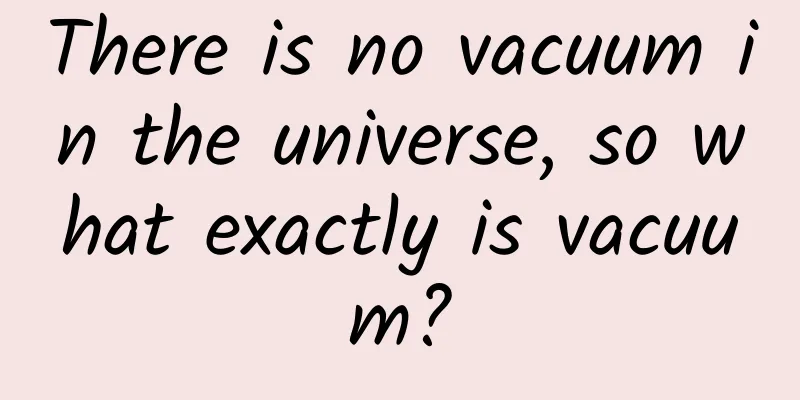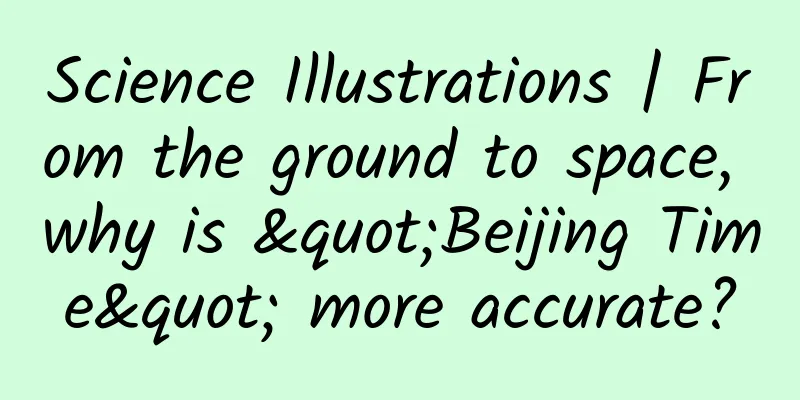There is no vacuum in the universe, so what exactly is vacuum?

|
The word "vacuum" is not unfamiliar to you and me. We can even say that it can be seen almost everywhere around us, such as vacuum-packed food purchased in supermarkets, vacuum sealing bags used in daily life, and so on. Are these things named "vacuum" real vacuums? Of course not, and they are a far cry from real vacuums. Real vacuum refers to a space where no particles with energy and momentum exist. If you think about this sentence carefully, you will immediately realize that "real vacuum" is absolutely impossible to exist. Because particles with energy and momentum include not only various atoms and molecules that make up common matter, but also photons and even neutrinos. In short, there can be nothing in a vacuum. It's okay to have no photons, but it's almost impossible to have no neutrinos. Neutrinos, like photons, are basic particles that make up matter and are a type of lepton. Neutrinos are very small, so all matter in the macroscopic world is almost transparent to them, including our bodies. You may not know that about 100 trillion neutrinos from the sun pass through our bodies every second, and we don’t feel them at all. It can be seen that it is almost impossible to create a space without neutrinos, so there is no vacuum in the true sense. Not only can humans not create such a space, but there is no such space anywhere in the universe. So we can only lower the requirements for vacuum and call the space with air pressure far below the standard atmospheric pressure a vacuum. Even if we lower the requirements for vacuum, it is still difficult to create a vacuum space. The viewpoints of science and theology are in opposition in most cases, but they are surprisingly similar on the issue of vacuum. Western theological thought believes that demons will appear in a vacuum, so God hates vacuum very much. As long as a vacuum appears, it will be immediately filled with other substances, so vacuum will not exist. Even if a vacuum appears, it will disappear quickly. The viewpoint of theology is a bit bizarre, but the conclusion is highly similar to the facts. It is indeed very difficult to create a vacuum space in the real world. The difficulty of creating a vacuum space is closely related to the degree of vacuum you want to achieve. One standard atmospheric pressure is 101325Pa, and a vacuum space with a pressure above 100Pa is called "low vacuum". Such a vacuum can be achieved simply by pumping air. The space with a pressure between 0.1Pa and 100Pa is called medium vacuum, and the space between 0Pa and 0.1Pa is called high vacuum. Whether it is low vacuum, medium vacuum or high vacuum, it can be achieved by pumping air, and the tool is the vacuum pump we are familiar with. Of course, pumping is not the only way to create a vacuum space. Chemical reactions can also be used to assist in creating a vacuum space. For example, a special gas in a space is converted into a solid through a chemical reaction. Since the density of solid matter is greater, a certain vacuum is formed in the enclosed space. Now let's think about this question. If we don't consider basic particles such as photons and neutrinos, and only consider gas molecules, can we create a complete vacuum space? Still not. Let’s not talk about whether we can completely extract all the gas molecules in a confined space. Even if we do it, we will soon find that new gas molecules have appeared in this space. Why is this so? Any enclosed space is made of matter. No matter what material the outer wall of this space is made of, when the atmospheric pressure inside it drops to a certain level, the molecules in the outer wall will diffuse out like gas molecules. This is just like what theological thought says, God hates vacuum, once a vacuum appears, he will immediately fill it with other substances. Humans cannot create a vacuum space, and the universe cannot do the same. The universe is empty, especially in areas far away from galaxies, where the density of matter is extremely low. In these empty areas of the universe, almost no pressure can be measured. It is infinitely close to a vacuum, but it is definitely not a true vacuum. The average temperature of the universe is below minus 270 degrees Celsius, which is still a certain distance from the absolute zero of -273.15 degrees Celsius. Some people say that only a vacuum can reach absolute zero, but this is actually not correct. The essence of temperature is movement. The faster the movement, the higher the temperature. Movement is the essential attribute of matter. As long as there is matter, there is movement, and there is temperature. Absolute zero cannot appear in all places where matter exists. So what about the vacuum space without matter? There is nothing in the vacuum. Since there is nothing, there is naturally no temperature. Therefore, the vacuum is not absolute zero, but there is no temperature. For more information, please follow the official account: sunmonarch |
Recommend
When lung cancer comes, your legs may be the first to sound the alarm →
Lung cancer is a very common malignant tumor worl...
Tips for writing titles for new media operations!
One of the basic skills of new media operation is...
Zhai Shanying: Find out the secrets of capital making money
Tutorial Introduction Companies that do not under...
Can ginger, Polygonum multiflorum and black sesame really help grow dark hair?
Every time I look in the mirror and find a few ne...
2021 CPA Money-Making Project Training Camp, where beginners can earn 200-1000 yuan per day
2021 Hand-in-hand teaching you how to play the CP...
How can we do overseas influencer marketing well?
After verification in recent years, influencer ma...
Hammer M1/M1L hands-on experience: Luo Yonghao's iPhone deserves a 9
After a long time, Luo Yonghao finally came up wi...
What are the steps to activate Douyin Blue V? What is the use of Douyin Blue V?
I believe everyone knows that Tik Tok short video...
How much does it cost to make the Naqu Electrical Mini Program? What is the quotation for the production of Naqu Electrical Mini Program?
WeChat Mini Program is an application that users ...
Lizard Squad: Microsoft and Sony are idiots
[[125262]] For many gamers, this Christmas was a ...
In the post-iPhone era, Apple also announced a strategic reorganization of its leadership
Well-known Chinese and foreign technology compani...
"Lice" have coexisted with us for tens of millions of years, so why haven't we seen them in recent years?
When talking about lice, everyone may feel their ...
Why do short video platforms need to conduct matrix operations?
Now many popular short video accounts have starte...
Lan Guilian and Lan Ziyun's illustration training camp will end in April 2021 [HD quality with materials]
Lan Guilian and Lan Ziyun's illustration trai...
A brief analysis of mobile Internet advertising fraud methods. How to prevent it?
1. Causes of Cheating Here I would like to first ...









